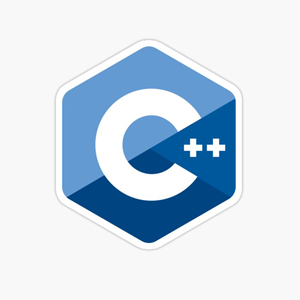Given an array of jobs where every job has a deadline and a profit. Profit can be earned only if the job is finished before the deadline. It is also given that every job takes a single unit of time, so the minimum possible deadline for any job is 1
All Answers
total answers (1)




 C++ programming
C++ programming
First of all, forget about the greedy algorithm. Let’s just solve with our intuition. Since the problem is to maximize profit intuition says to select jobs in decreasing order according to their profit. That means to select the maximum profit one first, then the 2nd maximum profit one and so on. While selecting jobs we only need to keep track whether it can be finished in deadline.
So let’s start...
It can be seen from the job table that, there are four jobs with the scheduled deadline at most 2. Thus we can only select a maximum of 2 jobs from these 4 jobs since each job take 1 unit time to process. (local observation)
At time 0:
Select maximum profit one with deadline at most 2
Job id: 3, deadline: 2, valid choice, process the job
Profit at time 0 : 60
At time 1:
Select maximum profit one from remaining jobswith deadline at most 2
Job id: 4, deadline: 2, valid choice, process the job
Profit at time 1 : 60+30
That’s why can’t choose job with ID 5 & 2
At time 2:
Select maximum from remaining one with deadline greater than 2
Job id: 6, deadline: 4, valid choice, process the job
Profit at time 2 : 60+30+80
At time 3:
Select job
With job id: 1, deadline : 4, valid choice, process the job
Job sequence : 3 4 6 1
Finally total profit= 60+30+80+30=200
No other choice could have resulted better (you can check it!!!!). Thus the solution is optimized and we have found the maximum solution.
Now, revise what we have done. We have actually sorted the job table according to max profit & then have made the local best choice at each iteration to reduce the problem size & ultimately to reach the goal. Simply speaking, we have used the greedy technique intuitively & greedy algorithm has successfully solved the job sequencing problem.
Now to code simply follow the below steps which are nothing but what we did solving the previous example:
class job { public: int jobid; //job id int deadline; //deadline int profit; //profit of the job };To do this we have defined our own compare function & used STL sort.
bool mycompare(job *x,job *y)//boolean function { //sort as per decreasing profite return x->profit>y->profit; } sort(obj,obj+n,mycompare);Create slot[max] to mark occupied slots
// now pick the job with max deadline from // that deadline traverse array backto find an empty slot for(int j=(obj[i]->deadline)-1;j>=0;j--) { if(slot[j]==false){ // slot is empty // count the total profit profit+=obj[i]->profit; store[j]=obj[i]->jobid; slot[j]=true; break; } }C++ implementation of Job sequencing problem
Output
need an explanation for this answer? contact us directly to get an explanation for this answer